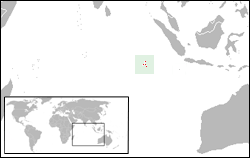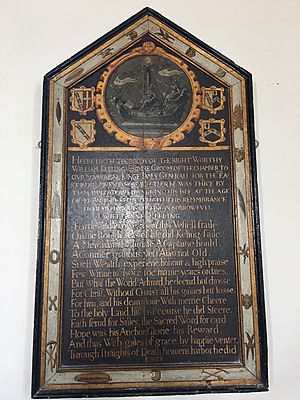William Keeling facts for kids
Captain William Keeling (1577 – 19 September 1619) was a British sea captain who worked for the East India Company. This company was very important for trade between Britain and Asia a long time ago. Keeling is best known for discovering the Cocos (Keeling) Islands.

Contents
Early Voyages and Discoveries
William Keeling started his career with the East India Company. In 1604, he was the captain of a ship called the Susanna during the company's second big journey. This trip was quite difficult, and his crew became very small.
Later, in 1607, he led another important journey. This time, he commanded two ships, the Red Dragon and the Hector. During this voyage, he met with a representative from the Ayutthaya Kingdom (which is now Thailand) in 1608. This meeting happened in a place called Bantam on the island of Java.
As he was sailing back to England from the Banda Islands in 1609, Captain Keeling made an important discovery. He found a group of islands in the Indian Ocean. These islands are now known as the Cocos (Keeling) Islands, named after him.
Life After Sea Voyages
When Captain Keeling returned to England, King James I recognized his achievements. The King gave him an important role at court. Around 1618, Keeling was made the Captain of Cowes Castle. This castle is located on the Isle of Wight, an island off the south coast of England. William Keeling passed away there in 1620.

The Mystery of Shakespeare's Plays
A small part of Captain Keeling's personal diary still exists today. In this diary, it was thought that he wrote about his crew performing plays by the famous writer William Shakespeare. The diary entries seemed to say that his crew acted out parts of Hamlet in 1607 and 1608, and Richard II in 1607. These performances supposedly happened while they were at sea, near places like Sierra Leone and Socotra.
For some time, people wondered if this part of the diary was real or if someone had made it up. Later, many believed it was genuine. However, more recent studies suggest that it might actually be a fake. Some experts now think it was likely created by a person named John Payne Collier.
See also
 In Spanish: William Keeling para niños
In Spanish: William Keeling para niños

